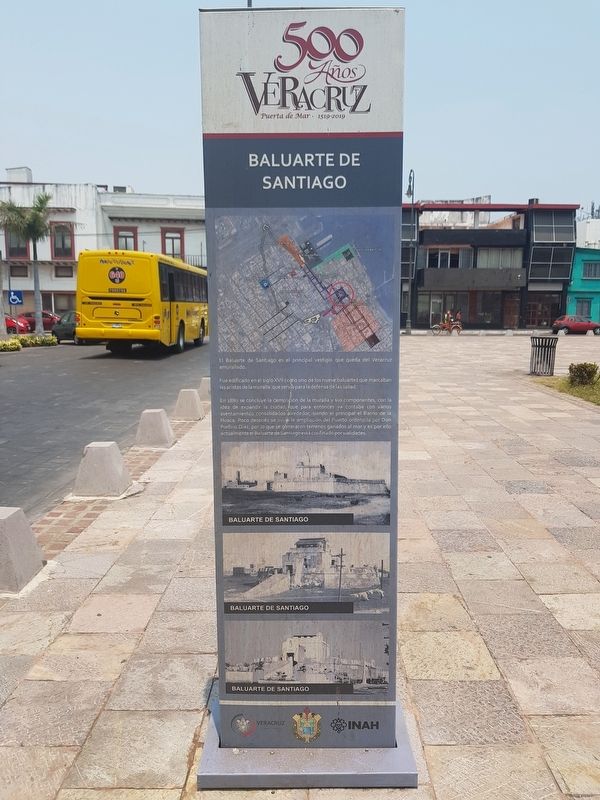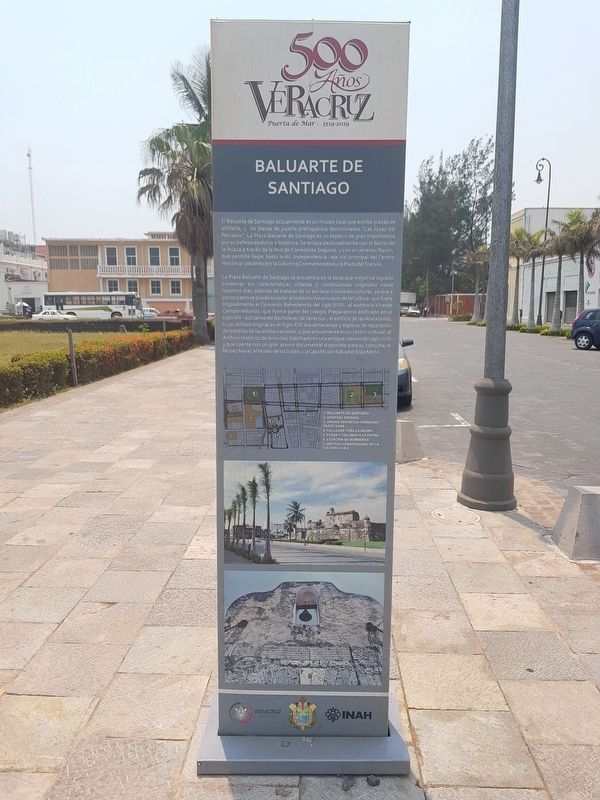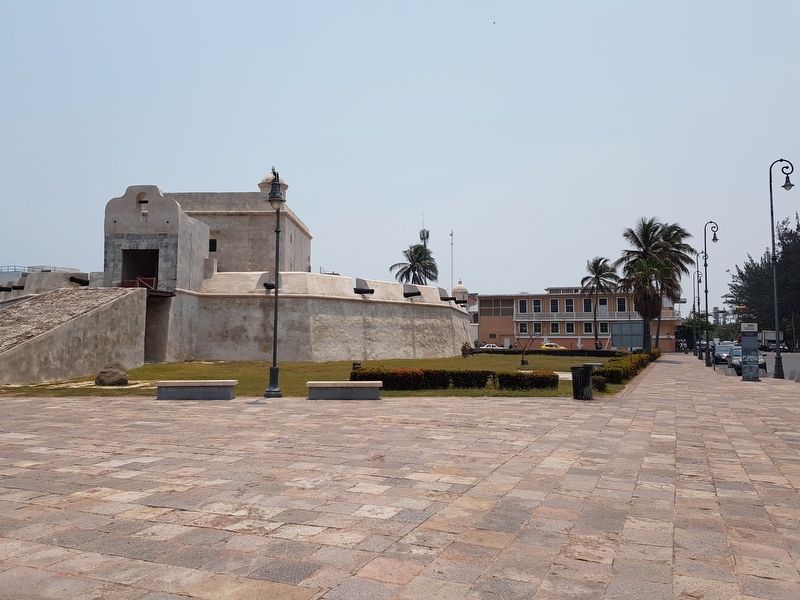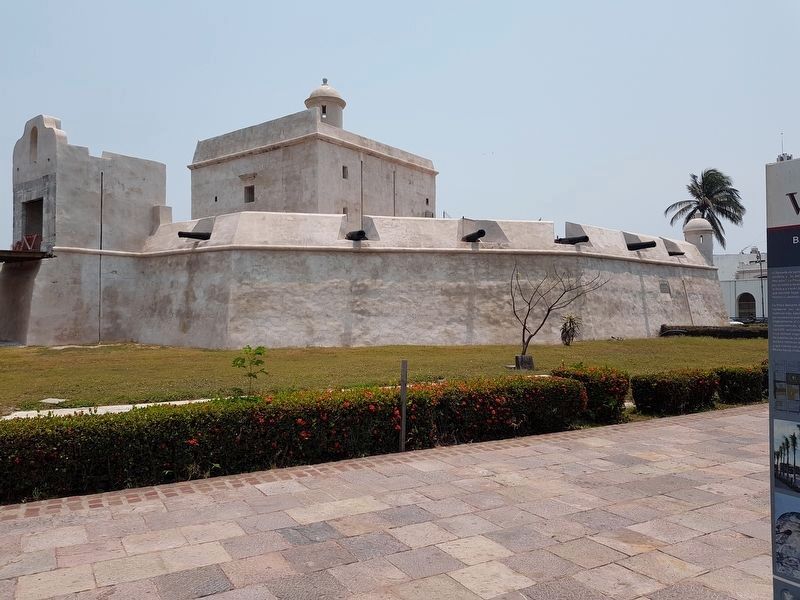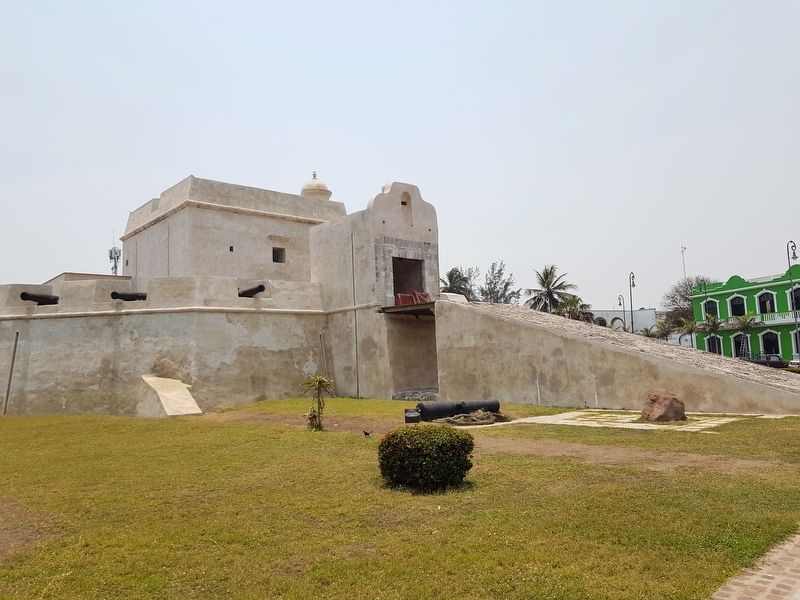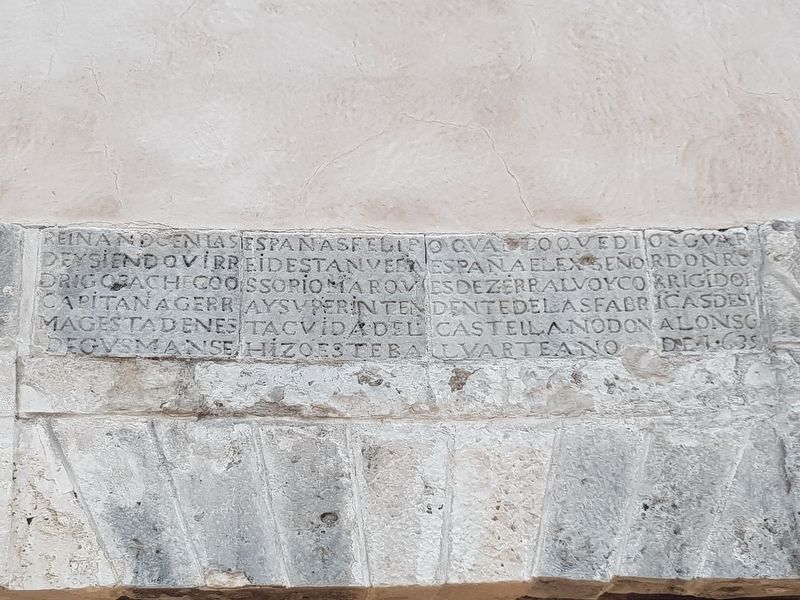Veracruz, Mexico — The Gulf Coast (North America)
The Bastion of Santiago
500 Años Veracruz ∙ Puerta de Mar ∙ 1519-2019
El Baluarte de Santiago es el principal vestigio que queda del Veracruz amurallado.
Fue edificado en el siglo XVIl cormo uno de los nueve baluartes que marcaban las aristas de la muralla que servía para la defensa de la ciudad.
En 1880 se concluye la demolición de la muralla y sus componentes, con la idea de expandir la ciudad, que para entonces ya contaba con varios asentamientos consolidados alrededor, siendo el principal el Barrio de la Huaca. Poco después se inicie la ampliación del Puerto ordenada por Don Porfirio Díaz, por lo que se generaron terrenos ganados al mar y es por ello actualmente el Baluarte de Santiago está confinado por vialidades.
Tres fotos antiguos del Baluarte de Santiago
Baluarte de Santiago
El Baluarte de Santiago actualmente es un museo local que exhibe piezas de artillería, y las piezas de joyería prehispánica denominadas "Las Joyas del Pescador". La Plaza Baluarte de Santiago es un espacio de gran importancia por su belleza escénica e histórica. Se enlaza peatonalmente con el Barrio de la Huaca a través de la Red de Corredores Seguros, y con el corredor Rayón, que permite llegar hasta la Av. Independencia - eje vial principal del Centro Histórico - pasando por la Columna Conmemorativa y la Plaza del Tranvía.
La Plaza Baluarte de Santiago se encuentra en la zona que mejor ha logrado conservar sus características urbanas y constructivas originales hasta nuestros días, además de tratarse de un enclave o corredor cultural, ya que a pocos pasos se puede acceder al Instituto Veracruzano de la Cultura - que fuera originalmente el Convento Behetlemita del siglo XVIIl -, el auditorio Vicente Camporredondo, que forma parte del colegio Preparatorio edificado en el siglo XIX - actualmente Bachilleres de Veracruz -, el edificio de las Atarazanas cuya utilidad original en el Siglo XVII era almacenaje y espacio de reparación de mástiles de las embarcaciones, y que actualmente es un centro cultural; el Archivo Histórico de la ciudad, habilitado en una antigua casona del siglo XVIII y que cuenta con un gran acervo documental disponible para su consulta; el Museo Naval, el Museo de la Ciudad, y la Casa Museo Salvador Díaz Mirón.
1. Baluarte de Santiago
2. Hospital Español
3. Unidad Deportiva Fernando Pazos Sosa
4. Callejón Toña la Negra
5. Plaza y Columna a la Patria
6. Estación de Bomberos
7. Instituto Veracruzano de la Cultura I.V.E.C.
The Bastion of Santiago
500 Years of Veracruz ∙ Gateway to the Sea ∙ 1519-2019
The Bastion of Santiago is the main remnant of the walled city of Veracruz.
It was built in the 17th century as one of the nine bastions that marked the edges of the wall that served to defend the city.
In 1880 the demolition of the wall and its main components was completed, with the idea of expanding the city, which by then already had several established settlements around it, the main being the Barrio de la Huaca. Shortly after the expansion of the port ordered by Porfirio Díaz began, land regained from the sea was created. This explains why the Bastion of Santiago is currently confined by roads.
Three photos of the Bastion of Santiago
Bastion of Santiago
The Bastion of Santiago is currently a local museum that exhibits pieces of artillery and the pre-Hispanic pieces of jewelry called "The Jewels of the Fisherman." The Bastion of Santiago Plaza is a space of great importance for its scenic and historical beauty. It is linked by walkways to the Barrio de la Huaca through the Safe Runners Path and with the Rayón Corridor, which allows you to reach Avenida Independencia - the main road of the Historic Center - passing by the Memorial
Column and the Old City Tram Plaza .
The Bastion de Santiago Plaza is located in the area that has best managed to preserve its original urban construction characteristics to this day, as well as serving as a cultural corridor, since in a few steps you can access the Veracruz Institute of Culture - which was originally the 17th-century Bethlehemite Convent; the Vicente Camporredondo Auditorium, which is part of the Preparatory School built in the 19th century - currently The Bachilleres de Veracruz School; the Atarazanas Building whose original use in the 17th century was for as storage and repair space for ships’ masts, and which is currently a cultural center; the Historical Archive of the City, now in an old mansion from the 18th century and which has a large documentary collection available for consultation; the Naval Museum, the City Museum, and the Salvador Díaz Mirón House Museum.
1. Bastion of Santiago
2. The Spanish Hospital
3. Fernando Pazos Sosa Sports Unit
4. Toña la Negra Alleyway
5. Square and Column of the Homeland
6. Fire Station
7. Veracruz Institute of Culture
Erected by Instituto Nacional de Antropología e Historia (INAH).
Topics. This historical marker is listed in these topic lists: Colonial Era • Forts and Castles. A significant historical year for this entry is 1880.
Location. 19° 11.883′ N, 96° 8.019′ W. Marker is in Veracruz. Marker is on Avenida Valentín Gómez Farías just north of Calle Ignacio López Rayón, on the right when traveling north. Touch for map. Marker is in this post office area: Veracruz 91700, Mexico. Touch for directions.
Other nearby markers. At least 8 other markers are within walking distance of this marker. Independence Heroes of Veracruz (within shouting distance of this marker); The Convent of the Bethlehemites (about 120 meters away, measured in a direct line); Julio S. Montero Plaza (about 150 meters away); 100th Anniversary of Firefighting in Veracruz (about 180 meters away); Lieutenant José Azueta (about 180 meters away); The Veracruz City Museum (about 210 meters away); The Mexican Naval Academy (about 210 meters away); Veracruz Memorial to the Fallen of Foreign Invasions (approx. 0.2 kilometers away). Touch for a list and map of all markers in Veracruz.
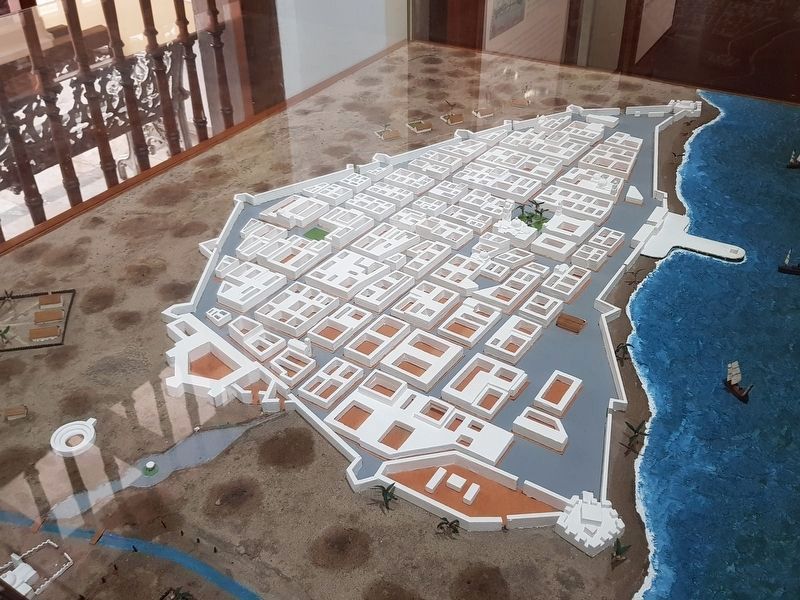
Photographed By J. Makali Bruton, April 23, 2019
7. A model of the walled city of Veracruz
This model is at the Museum of the City of Veracruz. The Bastion of Santiago is shown at the bottom right, at the eastern end of the city. As the marker mentions, due to land reclamation the bastion is no longer so close to sea and is surrounded by streets.
Credits. This page was last revised on June 19, 2023. It was originally submitted on August 2, 2019, by J. Makali Bruton of Accra, Ghana. This page has been viewed 205 times since then and 16 times this year. Photos: 1, 2, 3, 4, 5, 6. submitted on August 2, 2019, by J. Makali Bruton of Accra, Ghana. 7. submitted on August 3, 2019, by J. Makali Bruton of Accra, Ghana.
